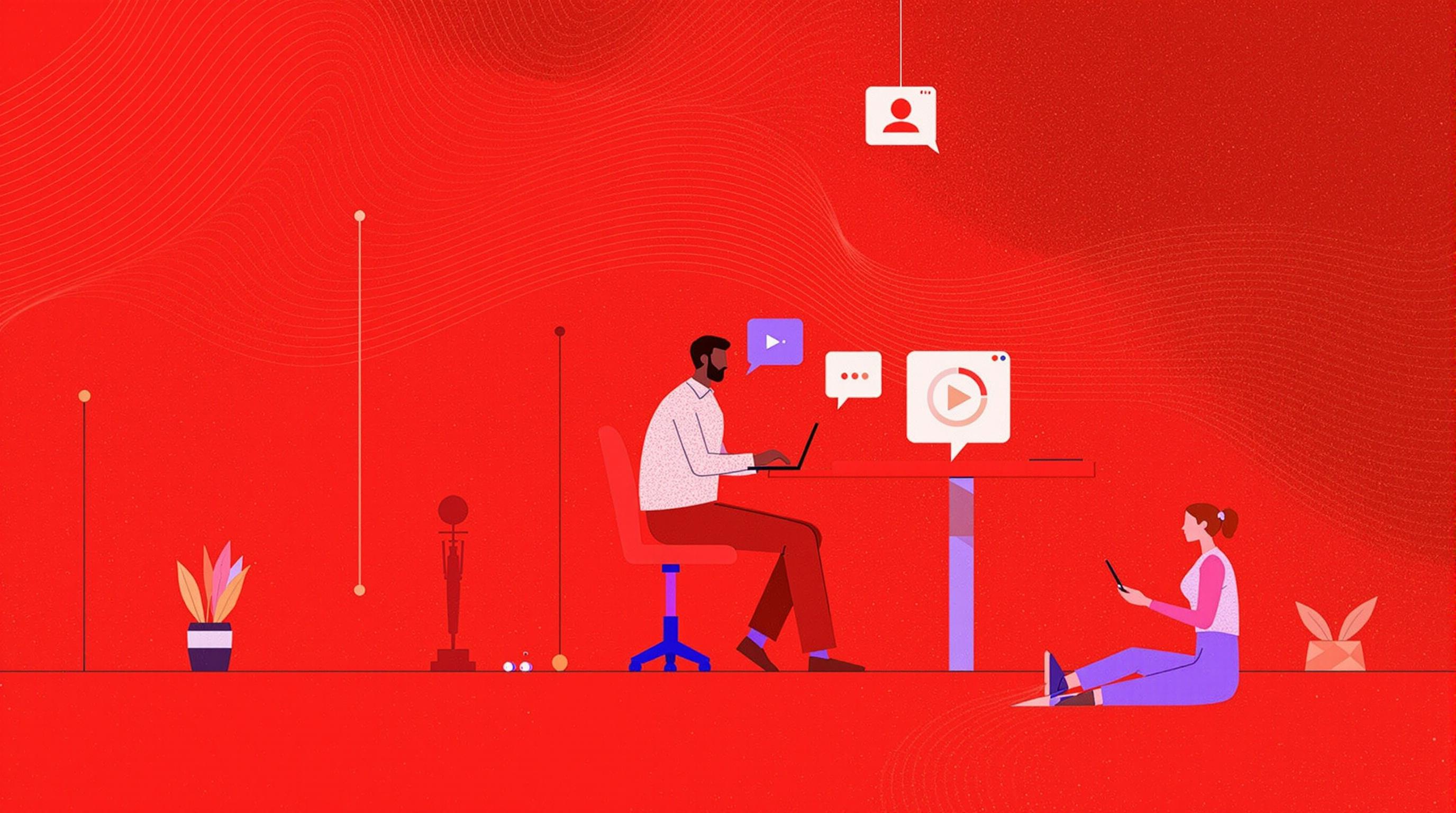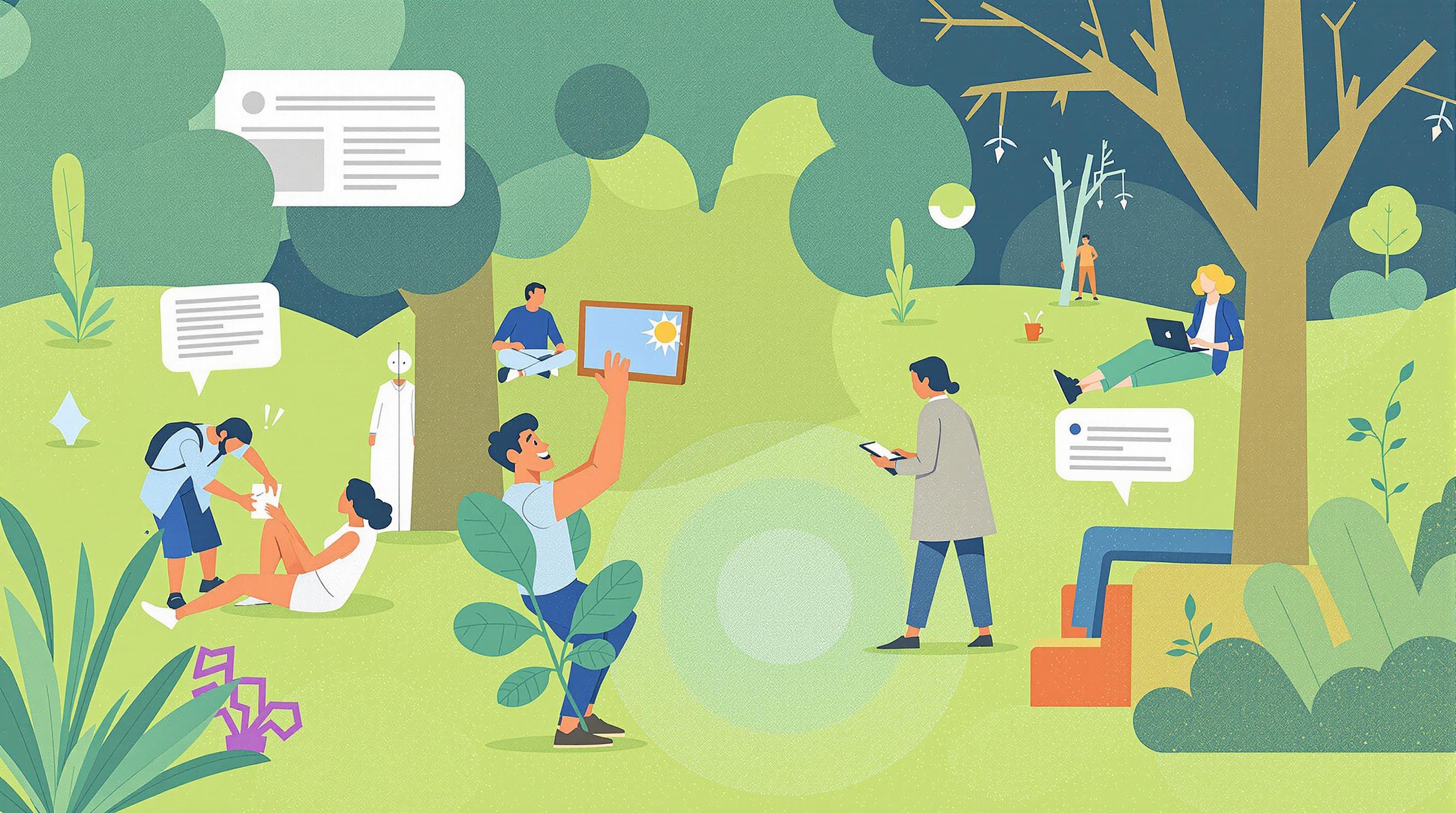Related Articles
- Navigating the Talent Labyrinth: How Emotional Intelligence Is Shaping New Hiring Practices in Unseen Markets
- Behind the Scenes: How Automating HR Processes Is Redefining the Future of Recruitment and Job-Seeking Strategies
- Beneath the Surface: Unveiling the Surprising Role of Environmental Sustainability in Shaping Future Careers
- Exploring the Quirky Side of Remote Work: How Hobbies Are Fueling Professional Success in Unexpected Ways
- How the Remote Revolution is Inspiring Unlikely Friendships Across Continents: A Study of Global Connectedness
- The Unforeseen Bond: How Virtual Coworking Spaces Foster Unexpected Connections Amidst Remote Work
The Unforeseen Bond: How Virtual Coworking Spaces Foster Unexpected Connections Amidst Remote Work
The Unforeseen Bond: How Virtual Coworking Spaces Foster Unexpected Connections Amidst Remote Work
The rise of virtual coworking spaces has led to a surge in unexpected connections, breaking the boundaries of remote work. These platforms not only enhance productivity but also cultivate a sense of community, making the remote work environment less isolating.
Breaking Down Loneliness
Imagine waking up, brewing your coffee, and sitting in front of your laptop, ready to tackle the day's tasks. But there's something missing: the connection—the chatter, the shared laughter, the camaraderie of an office. Research indicates that about 53% of remote workers feel disconnected from their colleagues (Buffer's State of Remote Work, 2021). This is where virtual coworking spaces step in, transforming isolation into opportunities for connection.
A Technological Revolution
Let’s rewind a little. Before 2020, the idea of coworking was thriving with a physical presence—think WeWork and coffee shops buzzing with creativity. The pandemic forced a pivot, leading to the birth of virtual coworking. These digital platforms became lifelines for many, fostering a sense of normalcy amidst uncertainty. Platforms like Focusmate and Workfrom have gone beyond traditional tools, using features such as video calls and shared virtual spaces to create an experience similar to being in an office.
Personal Story: Finding my Tribe
As a 28-year-old writer who once thrived on the buzz of a coffee shop, I found myself lost in my apartment, surrounded by research papers and an unmade bed. It was a friend who introduced me to a virtual coworking group on Slack. Our meetups started awkwardly, akin to a first date with a tech-savvy stranger. However, over time, we shared our work goals, threw around ideas during brainstorming sessions, and celebrated each other's wins. I was no longer a solitary writer; I had found my tribe.
The Science of Connection
What spurred this unexpected bond? Psychologically, there’s a concept known as “social presence,” which refers to the sense of being there with others even when separated by screens. A study by the University of Massachusetts found that groups who engaged together in online environments reported higher levels of trust and collaboration. Virtual coworking spaces enhance this presence by integrating icebreakers, accountability partners, and social hours into their schedules.
Statistical Surge: Productivity vs. Connection
Let’s throw down some numbers. A report from Owl Labs indicated that remote workers are 24% more productive than their in-office counterparts. However, it also highlighted a stark fact: 19% of remote workers struggle with loneliness. This contrast suggests that while the work is getting done, emotional needs are still underserved. Virtual coworking addresses this gap, blending productivity with the social interactions that are crucial for mental well-being.
Case Study: The Tech Company That Made the Change
Consider a tech startup based in San Francisco; when the pandemic hit, they could easily have chosen to let employees work from home in isolation. Instead, they instituted a “virtual water cooler” initiative where employees could log on each day for 30 minutes of casual conversation—no work talk allowed. Six months later, surveys revealed a 35% increase in team cohesion and a dramatic drop in reported feelings of isolation. The team had discovered that connectivity could come from just a few shared laughs over random topics like ‘best pizza toppings.’
Building Bridges through Coworking
Moreover, these platforms create diversity in interactions. Coworking can connect individuals from various locations, cultures, and experiences. Imagine collaborating with someone from a different continent—sharing insights that come from distinctive backgrounds. This not only enhances creativity but also helps us understand our differences and similarities, building a more empathetic society.
Humor in the Workplace
Let’s address what brings joy. Humor, that magical elixir. In one of my virtual coworking sessions, someone shared a meme about the ‘glamorous’ life of a remote worker; you know the one: sweatpants on the bottom, business casual on the top. Laughter erupted, and suddenly the seriousness of our work seemed less daunting. It’s these moments that bond us—and aren’t we all in need of a good chuckle?
Challenges Ahead
Of course, it’s not all roses. Virtual coworking brings its own set of challenges, including “Zoom fatigue.” According to a study by Stanford, video conferencing can drain our energy more than in-person meetings. The strategy lies in setting boundaries and managing time wisely—what’s often called 'structuring the chaos.' Having a set schedule for breaks, and alternating video calls with quieter work sessions, can help recreate that natural ebb and flow of an office environment.
The Future of Work: A Hybrid Approach
As we look toward the future, we can already see the trend forming: hybrid work environments are here to stay. Organizations worldwide are adopting flexible models that incorporate both in-person and virtual strategies. Virtual coworking will continue to play a critical role in this merging of worlds, keeping us connected no matter where we are situated.
Wrap-Up: Embracing the Unforeseen
In conclusion, virtual coworking spaces exemplify the beauty of human connection amidst the challenges of remote work. As someone who once struggled with feelings of isolation, I've witnessed the power of these spaces firsthand. They not only enhance productivity but create a tapestry of unexpected bonds that bridge distances and break down barriers. As we embrace these platforms, we learn that sometimes it’s the unforeseen connections that enrich our lives the most.
Call to Action
If you haven’t yet experienced the vibrancy of virtual coworking spaces, why not take the plunge? Connect with a community, find your fellow workers, and see how these interactions can fuel your creativity and drive. After all, the next great idea could be waiting just a video chat away. So, grab your favorite beverage, don your most comfortable pajama bottoms, and log in. Who knows what unexpected friendships could bloom?





